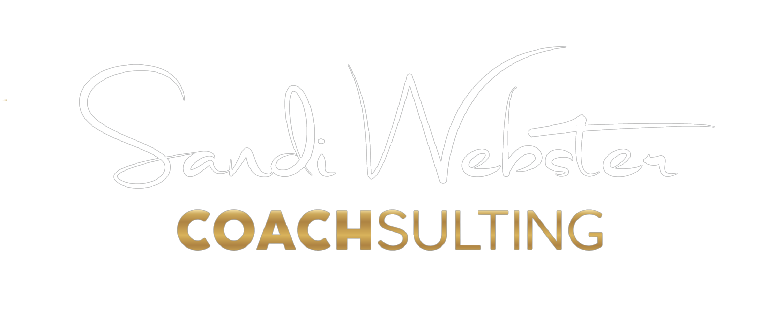Balancing Act: Weighing the Pros and Cons of Organic Growth Against Rapid Expansion
Business growth is a perpetual goal for companies, but the path to expansion isn’t always straightforward. Organic growth and rapid expansion represent two divergent strategies, each with unique implications. Let’s investigate the nuances of these approaches, examining their characteristics, benefits, and potential pitfalls.

Understanding Organic Growth
Organic growth stands out for its gradual and sustainable development. Rather than pursuing rapid, short-term gains, businesses opting for organic growth prioritize long-term stability and resilience. This deliberate pace allows for a more thorough integration of new initiatives and a deeper understanding of market dynamics. Additionally, organic growth relies heavily on internal resources and capabilities. Instead of seeking external funding or acquisitions, companies leverage their existing talent, expertise, and brand reputation to fuel their expansion. This reliance on internal assets fosters a sense of ownership and commitment among employees, who play a central role in the company’s growth trajectory.
Examples of Organic Growth Strategies
Examples of organic growth strategies include customer-centric approaches, such as improving product quality and customer service to enhance customer satisfaction and loyalty. Additionally, companies may invest in research and development to innovate and expand their product offerings, catering to evolving market demands. Moreover, organic growth often involves gradually expanding into new markets or segments, allowing the company to build a strong foundation and establish a solid presence before scaling further. These strategies prioritize sustainable growth over quick wins, positioning the company for long-term success in a competitive marketplace.
Pros and Cons of Organic Growth
Pros:
Sustainable Development
Organic growth tends to be more sustainable over the long term as it builds on the foundation of existing resources and customer relationships.
Lower Financial Risk
Since organic growth relies on internal resources, it typically involves lower financial risk than rapid expansion, which may require significant external investments.
Cultivation of Strong Company Culture
Organic growth fosters a culture of innovation, agility, and customer-centricity, encouraging employees to take ownership of the company’s growth journey.
Cons:
Slower Growth Rate
Organic growth may be slower than rapid expansion strategies, hindering a company’s ability to capitalize on emerging market opportunities.
Limited Scalability
Organic growth strategies may reach a point of diminishing returns, limiting the company’s ability to scale its operations rapidly beyond a certain threshold.
Vulnerability to Market Changes
Relying solely on organic growth may leave a company vulnerable to market fluctuations and competitive pressures, especially in fast-paced industries.
The Allure of Rapid Expansion
Rapid expansion signifies an aggressive approach to growth, opting for rapid market dominance through quick market penetration and scaling through external resources and investments. Companies pursuing this strategy aim to capture market share rapidly, often leveraging innovative products, aggressive marketing campaigns, or disruptive business models to gain a competitive edge. This rapid market entry allows them to establish a strong foothold in their target markets and seize opportunities before competitors can react. Rapid expansion often involves securing external funding, strategic partnerships, or acquisitions to fuel growth. These external resources enable companies to accelerate their expansion efforts, scale their operations rapidly, and capitalize on emerging market opportunities.
Instances of Successful Rapid Expansion Stories
Successful rapid expansion stories abound across various industries. Tech startups like Uber and Airbnb achieved unprecedented growth by leveraging technology to disrupt traditional industries and rapidly scale their services globally. Similarly, franchise-based businesses like McDonald’s and Subway expanded rapidly by franchising their business model, allowing them to penetrate new markets quickly and efficiently.
These examples illustrate the allure of rapid expansion and its potential for catapulting businesses to market dominance. However, it’s essential to recognize the inherent risks and challenges associated with this approach, including high financial stakes, organizational complexities, and the potential for burnout amidst rapid growth.
Pros and Cons of Rapid Expansion
Pros:
Rapid Market Dominance
Rapid expansion allows companies to quickly establish themselves as market leaders, gaining significant market share and visibility in a short period.
Attracting Investor Attention
High-growth companies often attract attention from investors and venture capitalists seeking opportunities for significant returns on investment.
Potential for High Returns
Rapidly expanding companies have the potential to generate substantial returns for investors and stakeholders, especially in emerging or high-growth markets.
Cons:
High Financial Risk
Rapid expansion often requires substantial financial investments, which can strain cash flow and expose the company to increased financial risk, especially if growth projections fall short.
Lack of Organizational Control
Scaling too quickly can strain organizational resources and lead to losing control over crucial aspects of the business, such as quality, customer service, and operational efficiency.
Potential for Burnout and Resource Mismanagement
The pressure to sustain rapid growth can lead to employee burnout and mismanagement of resources, undermining long-term sustainability and profitability.
Factors Influencing the Decision
Market Conditions and Industry Dynamics
The competitive landscape, market demand, and industry trends significantly shape the growth strategy. Businesses must assess market conditions to determine the feasibility and effectiveness of different approaches. For instance, in rapidly evolving industries, such as technology or fashion, rapid expansion may be necessary to seize fleeting opportunities, while in more stable sectors like utilities or healthcare, organic growth might be more appropriate for sustainable development.
Company Size and Resources
The size of the company and its available resources influence its capacity for growth. Smaller businesses with limited resources may opt for organic growth to leverage existing capabilities and minimize financial risk. In contrast, larger enterprises with ample resources may pursue rapid expansion to capitalize on economies of scale and gain a competitive advantage through aggressive market penetration.
Long-term Goals and Vision
Ultimately, the choice between organic growth and rapid expansion should align with the company’s long-term goals and vision. Businesses must consider their strategic objectives, risk tolerance, and values when determining the most suitable growth strategy. Whether the goal is to achieve steady, sustainable growth over time or capture market share and dominance rapidly, the chosen approach should support the company’s overarching vision for success.
Best Practices and Recommendations
Assessing Business Needs and Goals
Before embarking on any growth strategy, businesses must thoroughly assess their needs and goals. Assessment involves a SWOT analysis to evaluate strengths, weaknesses, opportunities, and threats. By understanding internal capabilities and external market conditions, businesses can identify the most viable growth opportunities and align their strategies with their long-term objectives.
Balancing Short-Term Gains with Long-Term Sustainability
While rapid expansion may offer the allure of quick gains, it’s crucial to balance short-term success with long-term sustainability. Businesses should prioritize strategies that create sustainable value for customers, employees, and stakeholders over quick wins that may compromise long-term success. Perform careful consideration of the trade-offs between organic growth and rapid expansion, weighing the risks and benefits of each approach in light of the company’s long-term vision and values.
Iterative Approach towards Growth Strategies
Business growth is a dynamic process that requires agility, adaptability, and continuous learning. Rather than adopting a one-size-fits-all approach, businesses should embrace an iterative approach toward growth strategies by experimenting with different tactics, monitoring performance metrics, and refining strategies based on feedback and results. By staying flexible and responsive to changing market conditions, businesses can navigate the complexities of growth with resilience and confidence.
Summary
Choosing between organic growth and rapid expansion is not always clear-cut in the ever-evolving business landscape. Each approach has its advantages and challenges, and when deciding, careful consideration must be given to market dynamics, company resources, and long-term objectives. By understanding the pros and cons of each strategy and adopting best practices for strategic decision-making, businesses can navigate the path to growth with confidence and clarity.
Balancing Act: Weighing the Pros and Cons of Organic Growth Against Rapid Expansion
- Introduction
- Brief overview of the topic
- Importance of choosing between organic growth and rapid expansion in business strategies
- Understanding Organic Growth
- Definition of organic growth
- Characteristics of organic growth:
- Gradual and sustainable development
- Reliance on internal resources and capabilities
- Examples of organic growth strategies
III. The Allure of Rapid Expansion
- Defining rapid expansion
- Key features of rapid expansion:
- Quick market penetration
- Scaling through external resources and investments
- Instances of successful rapid expansion stories
- Pros and Cons of Organic Growth
- Pros:
- Sustainable development
- Lower financial risk
- Cultivation of a strong company culture
- Cons:
- Slower growth rate
- Limited scalability
- Vulnerability to market changes
- Pros and Cons of Rapid Expansion
- Pros:
- Rapid market dominance
- Attracting investor attention
- Potential for high returns
- Cons:
- High financial risk
- Lack of organizational control
- Potential for burnout and resource mismanagement
- Factors Influencing the Decision
- Market conditions and industry dynamics
- Company size and resources
- Long-term goals and vision
VII. Best Practices and Recommendations
- Assessing business needs and goals
- Balancing short-term gains with long-term sustainability
- Iterative approach towards growth strategies
- Conclusion
- Recap of key points
- Emphasize the importance of strategic decision-making in business growth


